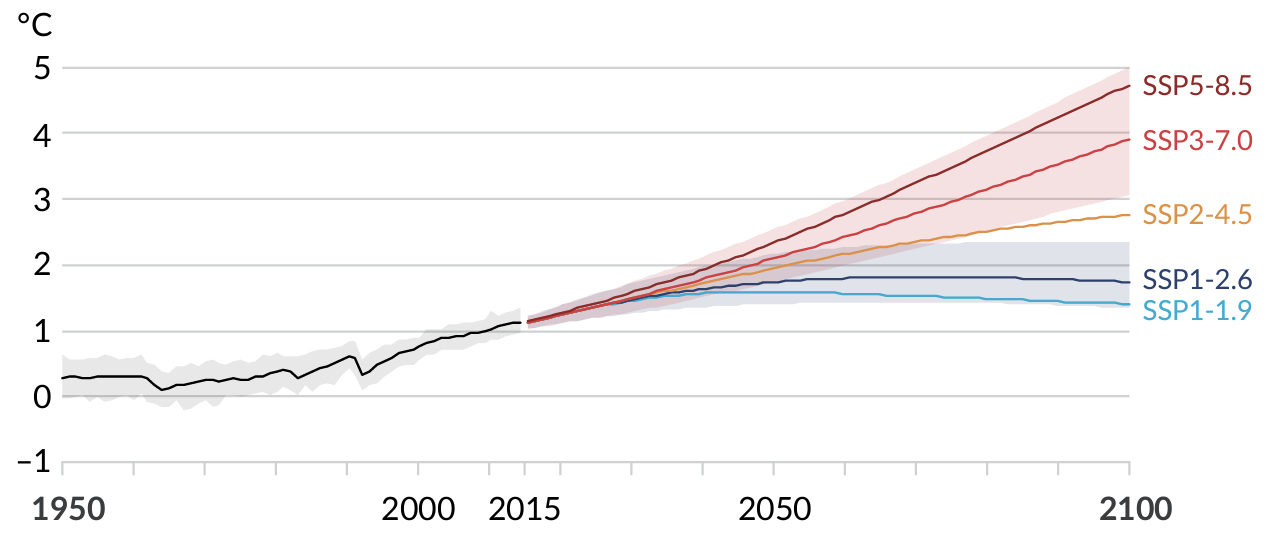Shared Socioeconomic Pathways (SSPs) describe five broad socioeconomic trends that could shape future society including assumptions on energy use, population levels, education and technology as well as the level of ambition for mitigating climate change. This is translated into scenarios of greenhouse gas emissions with projections from scenarios.
Shared Socioeconomic Pathways were developed to give a general view of future climate policy impacts for a range of possible climate futures.

The Shared Socioeconomic Pathways are:
- SSP1: Sustainability – Taking the Green Road (low challenges to mitigation and adaptation)
- SSP2: Middle of the Road (medium challenges to mitigation and adaptation)
- SSP3: Regional Rivalry – A Rocky Road (high challenges to mitigation and adaptation)
- SSP4: Inequality – A Road divided (low challenges to mitigation, high challenges to adaptation)
- SSP5: Fossil-fuelled development – Taking the Highway (high challenges to mitigation, low challenges to adaptation)

Climate model stakeholder
How do you choose the right climate model?
What does climate model resolution mean?
